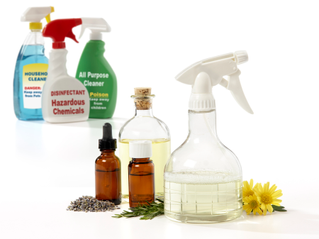 The household and industrial cleaning market is undergoing a transformation as sustainability, performance, and consumer expectations converge. Multi-purpose cleaners—long valued for convenience—are now at the center of innovation. For chemists and manufacturers, the challenge is creating formulations that not only deliver on cleaning efficacy but also align with global shifts in environmental regulations, raw material sourcing, and consumer lifestyle demands.
The household and industrial cleaning market is undergoing a transformation as sustainability, performance, and consumer expectations converge. Multi-purpose cleaners—long valued for convenience—are now at the center of innovation. For chemists and manufacturers, the challenge is creating formulations that not only deliver on cleaning efficacy but also align with global shifts in environmental regulations, raw material sourcing, and consumer lifestyle demands.
1. Sustainability as the Driving Force
Environmental impact is now a key factor influencing the future of multi-purpose cleaners. Growing pressure to reduce carbon footprints and eliminate problematic ingredients is reshaping formulation strategies:
- Bio-based surfactants derived from renewable feedstocks such as sugar, corn, and coconut oil are gaining traction. Alkyl polyglucosides (APGs) and sophorolipids are notable for their biodegradability and low toxicity.
- Concentrated formats—such as refill tablets, powders, and ultra-concentrated liquids—reduce packaging waste and transportation emissions.
- Packaging innovation, including recyclable plastics and compostable films, complements sustainable formulations.
2. Performance Enhancements with Green Chemistry
One of the greatest hurdles in multi-purpose cleaner development has been balancing environmental responsibility with high performance. Advances in green chemistry are enabling new solutions:
- Enzyme technology is expanding beyond laundry into surface cleaners, providing targeted stain and soil removal at lower temperatures and with reduced chemical load.
- Nanostructured additives and smart polymers are being explored for soil-release, anti-streak, and longer-lasting cleaning effects.
- Synergistic surfactant blends are allowing formulators to reduce reliance on solvents and phosphates while maintaining efficacy across a wide range of surfaces.
Access compliance data that helps you drive smart business decisions and manage product compliance across your entire retail ecosystem, at all stages, for every UPC, learn more here!
3. Multi-Functional and Specialized Benefits
While “all-in-one” is the traditional appeal of multi-purpose cleaners, the future lies in layering added functionality:
- Disinfecting and hygiene claims remain in demand, particularly in institutional and industrial settings where microbial control is critical. Post-pandemic, consumers also expect everyday cleaners to address hygiene in addition to dirt removal.
- Fragrance and sensory innovation is being used to create a perception of freshness and trust, especially in the household sector. Encapsulated fragrances and natural aroma compounds are increasingly replacing synthetic phthalates.
- Surface protection features, such as anti-fogging, water-beading, and scratch resistance, are becoming differentiators in premium formulations.
4. Digitalization and Smart Cleaning Trends
Technology is also entering the space. Connected cleaning systems and IoT-enabled dispensers are being introduced in industrial and commercial settings, optimizing chemical use and reducing waste. Data-driven dosing ensures consistency, safety, and sustainability while lowering operating costs.
5. Market Outlook and Opportunities for Chemists
As demand grows for sustainable, high-performance, and versatile cleaning solutions, the multi-purpose cleaner category will expand beyond “one-size-fits-all.” Chemists and manufacturers have opportunities to lead in areas such as:
- Developing low-VOC, non-toxic, and biodegradable formulations that meet tightening regulations.
- Leveraging biotechnology, including fermentation-derived actives and enzymes, to boost performance with reduced environmental impact.
- Creating modular systems, where a base cleaner can be combined with add-on boosters for specific needs (e.g., antimicrobial, degreasing, or fragrance).
- Designing products for circularity, ensuring both formulation and packaging integrate seamlessly into recycling and reuse systems.
Looking Ahead
Multi-purpose cleaners are evolving into sophisticated, multi-functional, and sustainable solutions that reflect broader industry shifts. For formulators, raw material suppliers, and manufacturers, success will come from innovating at the intersection of performance, sustainability, and consumer trust. The next generation of multi-purpose cleaners will not only clean surfaces but also align with the values of efficiency, safety, and environmental responsibility.
Resources
- Euromonitor International. Household Cleaning Products Market Outlook 2024–2028.
- Allied Market Research. Global Multi-Purpose Cleaners Market Forecast, 2023–2032.
- American Cleaning Institute (ACI). Sustainability Report 2023.
- OECD. The Role of Green Chemistry in Sustainable Development. 2023.
- Happi. “Future Directions in Home Care: Multi-Purpose Cleaners.” Happi Magazine, 2023.
- Grand View Research. Household Cleaners Market Size & Trends Report 2024–2030.
- McKinsey & Company. Consumer and Sustainability Trends in Household Care. 2023.
The views, opinions and technical analyses presented here are those of the author or advertiser, and are not necessarily those of ULProspector.com or UL Solutions. The appearance of this content in the UL Prospector Knowledge Center does not constitute an endorsement by UL Solutions or its affiliates.
All content is subject to copyright and may not be reproduced without prior authorization from UL Solutions or the content author.
The content has been made available for informational and educational purposes only. While the editors of this site may verify the accuracy of its content from time to time, we assume no responsibility for errors made by the author, editorial staff or any other contributor.
UL Solutions does not make any representations or warranties with respect to the accuracy, applicability, fitness or completeness of the content. UL Solutions does not warrant the performance, effectiveness or applicability of sites listed or linked to in any content.
